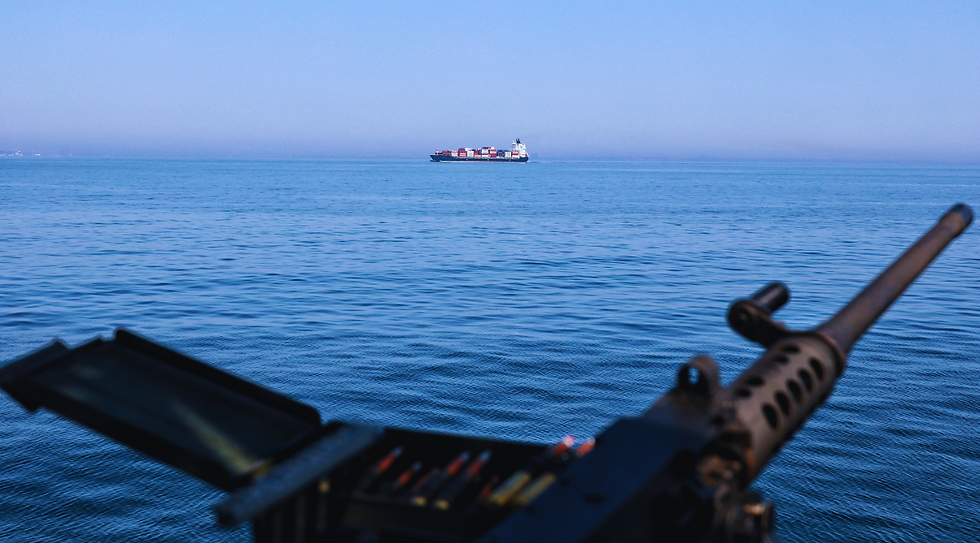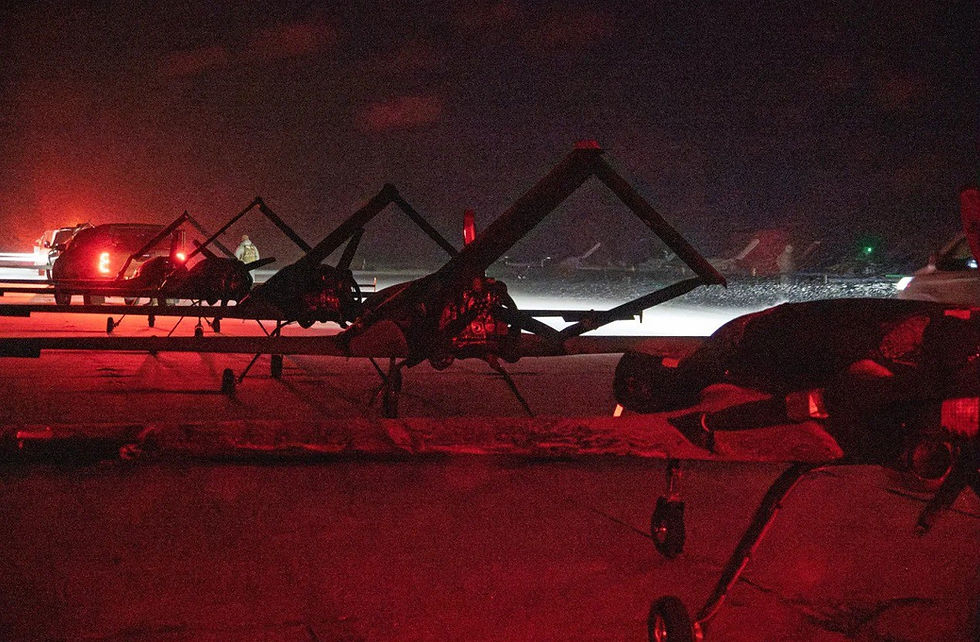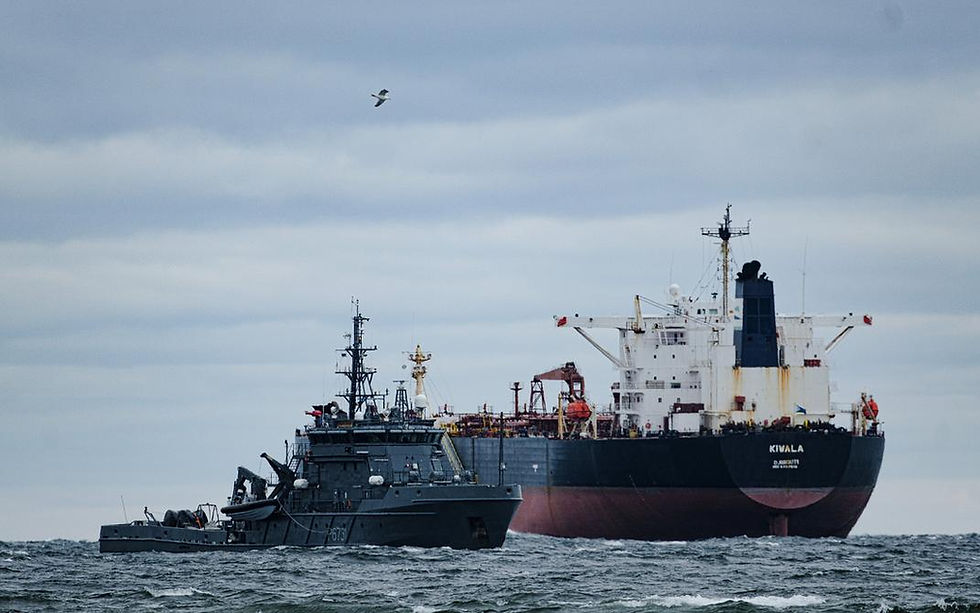Floating Megabomb Heaves to Near the English Coast
- Res Publica

- Oct 1, 2024
- 4 min read
The MV Ruby, a ship carrying a highly explosive Russian cargo, is damaged and looking for a port. Whether or not this is hybrid warfare, the threat is clear.

The Maltese-registered cargo ship, carrying 20,000 tons of explosive ammonium nitrate, triggered alarm bells in Western capitals when the vessel sustained damage and began to seek permission to unload its lethal cargo.
She is currently seaworthy but unmoving some miles off the coast of Kent, to the east of London, and just outside UK territorial waters.
Spurning the obvious solution of a return to Russia, where she loaded at Kandalaksha in late August, the damaged vessel embarked on an odyssey of attempted entry to European ports, beginning at the Norwegian anchorage of Tromsø, a naval base that she was ordered to leave on September 4. Ruby then sought permission to dock at Klaipėda in Lithuania, a critical NATO reinforcement facility in time of crisis and war.
Lithuania refused because of the dangerous nature of the cargo. If 20,000 tons of ammonium nitrate were to detonate, it would obliterate the centre of any port city — the blast would be equal to a third of the 1945 Hiroshima bomb. That would be a repeat of the devastating explosion of the same substance in Beirut in 2020, although Ruby is carrying seven times more ammonium nitrate.
While Lithuanian authorities announced there was no evidence of malicious intent against the country’s national security, they noted that when dealing with Russia, or other unfriendly international actors, states should always be cautious.
Alongside its war against Ukraine, the Kremlin has long pursued an aggressive hybrid strategy aimed at spreading chaos and destabilization through disinformation, interference in elections, and support for anti-Western political parties. But there has been a substantial uptick in recent months, including serious acts of sabotage.
The shift in its strategy in the Baltic states from “classical” hybrid warfare to more “kinetic” approaches — not just propaganda and cyber-attacks, has now shifted to physical action on the ground.
The physical sabotage includes acts such as a fire at an IKEA storage facility in Lithuania, which helped fuel false narratives about the safety and reliability of foreign investments, while cyber-attacks on power grids, water supply, and communication networks have also been used alongside GPS jamming to disrupt people’s everyday lives.
The Baltic states are NATO members, meaning an outright military attack would likely trigger collective defence under Article 5; hybrid threats are designed to avoid direct confrontation that would result in a military response.
Others have also been targeted. In August, German officials were reportedly concerned that Russia was responsible for incendiary devices on international air parcels. German trains have also been hit by sabotage attacks.
In this atmosphere of heightened tension, should a ship carrying ammonium nitrate be interpreted as a hybrid threat? Potentially, yes, but it is important to walk between the dual traps of either neglecting emerging problems or labelling all incidents as deliberate.
Ammonium nitrate is highly explosive, especially when exposed to fire or contamination, so strict safety protocols are followed, including controlled unloading in designated safe zones, continuous monitoring, and emergency response plans. The International Maritime Dangerous Goods (IMDG) Code contains strict guidelines for the substance, and compliance helps prevent accidents during transport and emergency repairs.
Allowing Ruby to dock in Klaipėda would have created a significant security risk as the cargo would be a direct physical threat to a critical infrastructure hub, making it a potential trigger for destabilization if exploited by hostile actors.
Klaipėda is vitally important to Lithuania and NATO in several strategic areas — military logistics, energy security, and regional power stability.
It is a key hub for transporting military equipment and personnel and essential for NATO and the US’s reinforcement capabilities in the Baltic region. This would be particularly crucial in scenarios where the Suwałki Corridor, the narrow land strip connecting Poland and Lithuania, was under threat as the port would ensure NATO’s operational readiness in the region.
The port also hosts the only large-scale LNG terminal in the Baltic states, which enables the import of LNG as an alternative to Russian gas and is a cornerstone of Lithuania’s energy security strategy. A security incident could disrupt supplies for the whole region.
As if that wasn’t enough, Klaipėda plays a significant role in regional power connectivity through the NordBalt power cable, which links Lithuania with Sweden and is crucial for maintaining the stability of the Baltic power grid.
Given these strategic roles, any threat to Klaipėda, whether from mismanagement of a dangerous cargo or a deliberate act, has far-reaching implications for regional security and energy stability.
The Ruby episode underscores how hybrid threats can potentially evolve to include kinetic elements. The complexity of attribution, combined with Klaipėda’s strategic significance, makes it a potential flashpoint for regional security.
To prevent such situations, robust intelligence-sharing, surveillance and maritime security protocols must be robust. Authorities should also be vigilant about the origins and intentions of vessels requesting access.
Refusing or accepting such ships can have diplomatic repercussions, and denying entry might strain relations with the country of registration or cargo origin, especially if they are allies or significant trade partners. However, allowing such a vessel to dock could expose the host country to security and safety risks.
Effective communication and adherence to international protocols are essential to navigate these diplomatic challenges, highlighting the need for a balanced approach to security, diplomatic and legal considerations.
By Eitvydas Bajarūnas. Eitvydas Bajarūnas is an ambassador in the Ministry of Foreign Affairs of the Republic of Lithuania, and currently a Center for Europe Policy Analysis (CEPA) Visiting Fellow. Assessments and views expressed in the article are those of the author and should not be treated as the official position of the MFA of the Republic of Lithuania. Article and pictures first time published on CEPA web page. Prepared for publication by volunteers from the Res Publica - The Center for Civil Resistance.





Comments